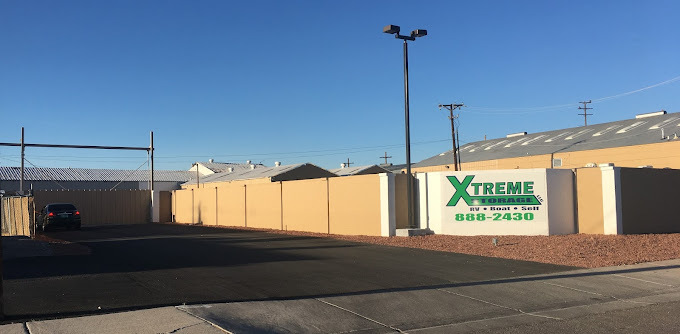Storage unit facilities are becoming increasingly vital in
our lives, providing a secure and convenient solution to store possessions
ranging from household items to business inventory. However, as customers
entrust these facilities with their valuable belongings, ensuring robust
security measures becomes paramount. In this article, we will delve into the
crucial security measures that every storage unit facility should implement to
guarantee the safety and confidence of their clientele.

1. Perimeter
Fencing:
The initial layer of defense for a storage unit facility is
a robust perimeter fence. This physical barrier serves as a deterrent against
unauthorized access. To be effective, the fence should be constructed from
durable materials like steel or concrete to resist tampering and vandalism. It
is also essential to regularly inspect the fence for any breaches or damage to
maintain its integrity.
2. Gated
Access:
Controlled access is a pivotal component of storage unit
facility security. Installing an access gate with a secure entry system, such
as a keypad or card reader, ensures that only authorized individuals can enter
the premises. Customers should receive unique access codes or cards, allowing
the facility to maintain strict control over who can enter and exit.
3. Surveillance
Cameras:
Surveillance cameras play a pivotal role in monitoring and
recording activities within the storage unit facility. They act as both a
deterrent and a valuable tool for investigations in case of incidents. To
maximize their effectiveness, cameras should be strategically placed at key
points, including entrances, exits, hallways, and around the perimeter. Modern
systems often incorporate motion sensors and night vision capabilities for
enhanced security.
4. Adequate
Lighting:
Proper lighting is essential to deter criminal activity and
enhance overall safety. Well-lit areas are less attractive to potential
intruders and provide a safer environment for customers visiting their storage
units after dark. Facilities should invest in energy-efficient,
motion-activated lighting to reduce operational costs while ensuring sufficient
illumination.
5. Individual
Locks:
Each storage unit should be equipped with a high-quality,
tamper-resistant lock. While customers are responsible for securing their own
units, storage facility management should provide guidance on lock selection
and offer locks for purchase on-site. Encouraging customers to use secure locks
helps protect their belongings and enhances overall security.
6. Alarm
Systems:
Intrusion alarm systems provide an additional layer of
security. These alarms can detect unauthorized access attempts and trigger a
response, such as sounding an audible alarm or notifying security personnel.
Additionally, fire alarms and environmental monitoring systems can safeguard
stored items from unforeseen disasters, ensuring the safety of both the
facility and its customers.
7. On-Site
Staff and Management:
Having on-site staff, such as managers or security
personnel, greatly enhances security. Staff members can monitor the facility,
respond to emergencies, and interact with customers, providing an additional
level of accountability and customer service. In case of suspicious activity or
security breaches, on-site personnel can take immediate action.
8. Access
Records and Logs:
Maintaining detailed access records is essential for
tracking who enters and exits the storage unit facility. These records can be
invaluable in the event of theft or other incidents. Access logs should include
information such as date, time, and the identity of individuals entering or
leaving the premises. Keeping these records organized and secure is crucial for
auditing and investigations.
9. Regular
Inspections and Maintenance:
Regular inspections and maintenance of the security
infrastructure are essential for identifying vulnerabilities and addressing
issues promptly. This includes checking the perimeter fence for damage,
ensuring surveillance cameras are functioning correctly, and testing alarm
systems. Proactive maintenance helps prevent security lapses and maintains
customer confidence.
10. Security
Education for Customers:
Educating customers about security best practices is crucial
for their safety and the facility's overall security. Storage unit facilities
should provide written guidelines and conduct orientation sessions to inform
customers about securing their units properly, using access codes or cards
responsibly, and reporting any suspicious activity promptly. Informed customers
are more likely to be proactive in protecting their belongings.
Conclusion
Security is the cornerstone of the storage unit industry. Customers rely on these facilities to safeguard their prized possessions, and it is the responsibility of storage unit facility owners and managers to meet this trust with unwavering security measures. By implementing measures such as perimeter fencing, gated access, surveillance cameras, adequate lighting, individual locks, alarm systems, on-site staff, access records, regular inspections, and security education, storage unit facilities can ensure the safety and peace of mind of both customers and staff. Investing in comprehensive security measures not only protects valuable belongings but also maintains the facility's reputation for safety and security, attracting and retaining loyal customers in an increasingly competitive market.